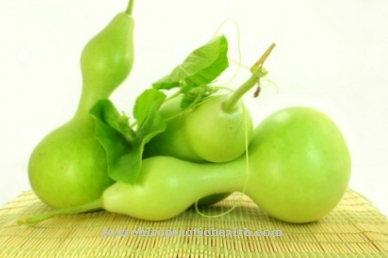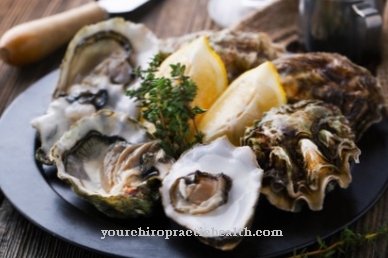The Pears are a very popular fruit not only in Germany, but worldwide. The plant belongs to the pome fruit and rose family. The pear is common in North Africa, East and West Asia, and parts of Europe.
What you should know about the pear

The origin of the pears is believed to be in Anatolia and the Caucasus. These fruits were already around 3,000 BC and to this day they are among the most popular types of fruit. In Germany they ripen in September. In the main growing areas, for example Italy, France, Spain, Asia, overseas, the USA, Argentina and Asia, the harvest takes place at different times, so that the pears are available all year round as imported goods. The pear plant prefers warmth and nutrient-rich soil.
Around 2,500 varieties are known worldwide, which are divided into summer, autumn and winter pears. Table pears are the most sold in Germany, for example the bottle-shaped, yellow or brownish Abate Fetel with the very juicy and firm pulp and the rounded Williams Christ pear with a yellow-green or reddish skin, which is particularly sweet when ripe. Pears are harvested when they are not ripe because they are very sensitive when ripe. Another characteristic of pears is that they are fairly low in acid, but contain a lot of sugar. This is what gives it its sweet taste. However, depending on the variety, they can also taste sour or nutmeg.
Importance to health
Thanks to the plant fiber lignin they contain, the pears help lower cholesterol levels. The secondary plant substances prevent cancer. They also help to reduce fat deposits in the blood vessels and thus reduce the risk of heart and circulatory diseases.
The functionality of all body cells is positively influenced by the potassium content. The muscle and nerve cells in particular depend on the supply of sufficient potassium. The high phosphorus content in pears also strengthens the nervous system. The fruit is said to increase the ability to concentrate.Therefore it is also suitable for children. Due to the mineral boron, the risk of developing osteoporosis is reduced. Furthermore, the pear contains plenty of chrome, so that daily needs can be easily covered. In addition, the vitamins it contains strengthen the immune system and, thanks to the high iron content, blood formation is positively influenced. The pears also aid digestion.
They absorb a lot of water in the intestine, so that the stool can be transported more easily and thus blockages are prevented or eliminated. Since pears contain less acid and fat than apples, for example, they are often digested more easily by people with stomach problems. The fruit is also suitable during diets, because its sweetness counteracts food cravings. In addition, digestion is stimulated and a purifying and draining effect is achieved. The pear provides a lot of fiber, so it will fill you up quickly.
Pears should be eaten with their skin on, as this is where most of the minerals and vitamins are found. Other ingredients include hormone-like substances, which means that the pear produces happiness hormones and is therefore not only very healthy, but also a good mood enhancer.
Ingredients & nutritional values
| Nutritional information | Amount per 100 gram |
| Calories 57 | Fat content 0.1 g |
| cholesterol 0 mg | sodium 1 mg |
| potassium 116 mg | carbohydrates 15 g |
| protein 0.4 g | vitamin C 4.3 mg |
Pears contain vitamin C and small amounts of the important vitamins B1, B2, B6, D and E. They also provide important minerals such as iron, magnesium, sodium, zinc, phosphorus and potassium as well as folic acid.
Intolerances & allergies
Some people cannot tolerate pears. The possible reason is that they contain plenty of fruit sugar (fructose), which sensitive people react to with gas, abdominal cramps, and diarrhea. In addition, unripe, hard pears put a strain on the digestive tract. A good tip is to consume some glucose while consuming it, as it can have a calming effect.
Shopping & kitchen tips
When purchasing the pears, you should make sure that their skin is undamaged and smooth. They are pressure sensitive and rotten quickly. Yellow and soft fruits with brown spots are already overripe.
The pears should only give very slightly when pressed with a finger. If you want to eat pears raw or prepare a fruit salad with them, you should choose one of the table pear varieties and ripe ones. Overripe fruits are only suitable for immediate consumption. If the pears are to be cooked, however, small, not quite ripe pears are best. Even harder fruits ripen quickly at room temperature. If stored in a cool and dark place, the pears can be kept for several weeks. Ripe specimens can be kept in the vegetable drawer of the refrigerator for one to two days. Since the pears emit the ripening gas ethylene, they should not be stored near sensitive fruits and vegetables, such as oranges, cucumbers and broccoli, as they will age more quickly.
The preparation of the pears is quick and easy: they are rinsed, patted dry, quartered and the core and stem are cut out. Then the quartered pear is peeled and cut into slices or cubes.
Preparation tips
The pears can be used extremely versatile, as the delicate aroma goes well with a wide variety of dishes, both sweet and savory. The pears are eaten raw. The most famous drink is probably the Williams Christ fruit brandy. The pear juice, which can be drunk pure or as a mixture, is also very popular. In Germany, pears are also popular in confectionery to make fresh fruit cakes.
Sweet pears also go perfectly with fruit salads and desserts, but also with spicy cheese or hearty salads. A smoothie can also be mixed wonderfully from ripe, soft pears. Firmer types (cooked pears) are used in jams, compotes and cakes, because table pears are rather unsuitable here. Half pears are often filled with cranberries and serve as a classic garnish for meat dishes. Firmer types (cooked pears) are used in jams, compotes and cakes, because table pears are rather unsuitable for this. Dried pieces of fruit are important ingredients in Christmas baking.
But also in the hearty form, for example combined with cheese, bacon or nuts, every dish is optimally refined with the pears. In northern Germany, the stew made from pears, bacon and beans is a classic. Hobby and professional cooks in particular conjure up very refined delights from these fruits, for example a pear sorbet or a spicy pear chutney. Don't forget the "Pear Helene", the steamed pears with chocolate sauce. Whichever dish is prepared with the pears, the basic rule is that the longer they have to be cooked, the firmer they should be.









.jpg)



.jpg)



.jpg)







.jpg)


